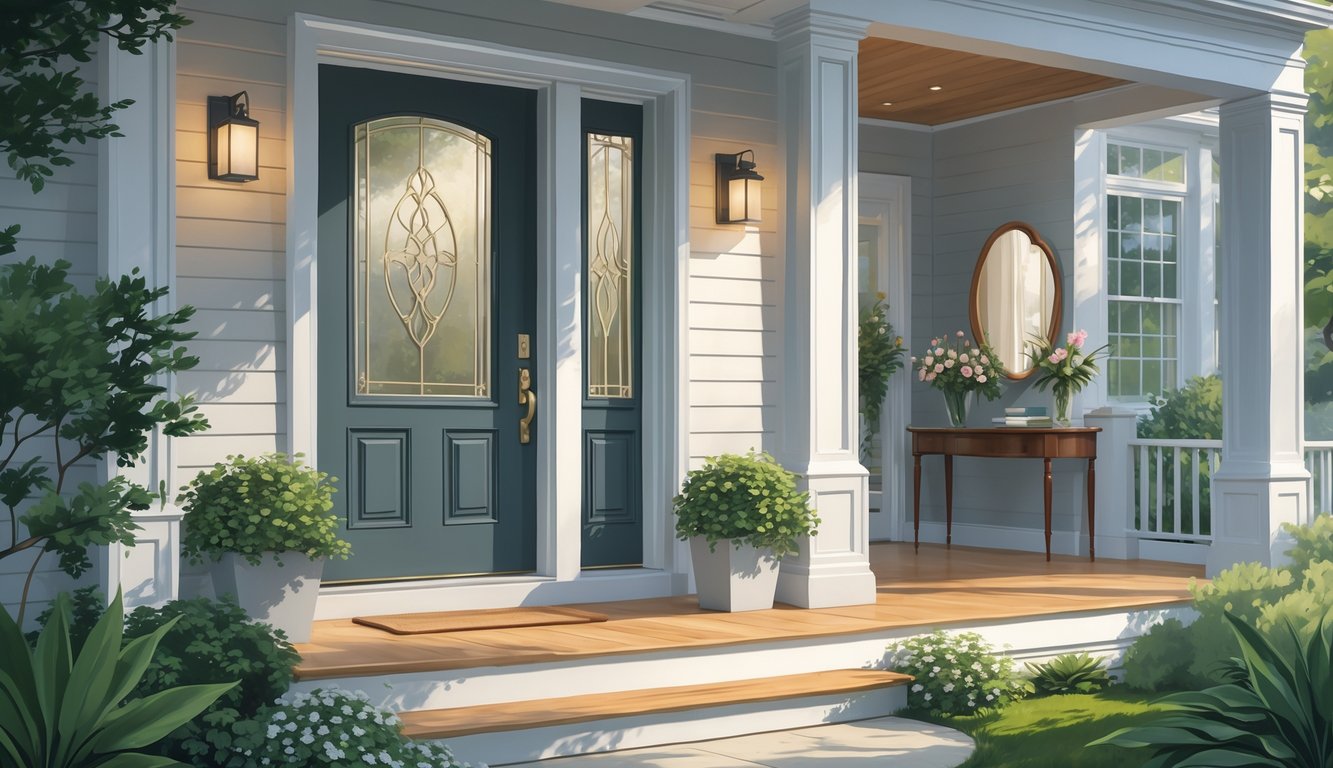
Landscaping Enhancements That Quietly Add Value
Last week I snapped a photo of my doormat, sent it to a group chat, and—no joke—a neighbor texted, “What’s different?” Apparently, the tiniest tweaks outside the front door weirdly catch people’s attention. I guess layering landscaping upgrades actually works, even if it feels like you’re just rearranging dirt for fun. Supposedly, curb appeal and ROI go hand-in-hand, but who’s really measuring?
Potted Plants and Greenery Tips
What’s the deal with potted plants? You buy them, forget to water, and somehow buyers still think the place looks better. One time I swapped out faded porch planters for cheap glazed pots with sansevieria and boxwood—nothing fancy. I swear I read in Better Homes & Gardens (or maybe it was a random blog?) that neatness matters more than fancy plants. So, trim the dead stuff. Water sometimes. Skip the landscaping acrobatics.
Stacking pots at different heights? Total game-changer. Three mismatched terra cotta pots from the clearance aisle and suddenly it looks intentional. I toss in hosta or whatever evergreen I can’t kill—my real estate friend says fresh, healthy plants are like a suit for your house. Front yard landscaping upgrades add value, or so the internet claims. The “only native plants!” crowd is exhausting. I just use what survives.
Seasonal Decor for Year-Round Appeal
Every year, there’s a new “seasonal entryway trend”—last winter it was giant pinecones, this spring it’s neon wreaths. I can’t keep up. But apparently, swapping seasonal décor makes buyers think the whole house is better maintained. Planters of pansies or mums (my cousin’s HOA hates mums, but whatever), wreaths that actually fit the door, nothing too themed.
Lisa Stryker from NALP told some magazine to focus on “seasonal color” at the entryway, and I clipped the article but lost it. Swapping doormats, adding a bench—sure, if you’ve got room. Custom entry upgrades supposedly include new lights and painting the door. These little changes scream “I care,” even if it’s just for show. No one warns you about the wind launching your pumpkins into the neighbor’s yard, though.
Windows in the Entryway: Letting in Light and Style

Honestly, it’s wild how nobody cares about windows around the front door until they’re stumbling over mail in the dark. Sidelights, transoms, those weird little windows above the door—if they’re bad, the whole entryway looks dim no matter how many bulbs you change.
Choosing the Right Window Treatments
I stared at my neighbor’s frosted entry glass last week and realized most people just slap up basic blinds and walk away. Those blinds? They suck up daylight, and the foyer’s already a cave. Sheer roller shades? Huge difference. The hardwood floors actually glowed at sunset. A contractor on BHG.com says to skip chunky grids or muntins for more light and privacy.
Textured glass or custom-fit cellular shades block nosy neighbors but let light bounce around. Just don’t pick something opaque unless you’re going for “entryway dungeon.” My real estate agent keeps ranting about clear glass sidelights for curb appeal, but after parties everyone just remembers how open it felt, not the hardware. Priorities, right?
Unique Architectural Features
One year, arched transom windows were everywhere—magazines, flips, even the bakery down the street. They’re supposed to look “historic,” but I mostly see dust and awkward curtains. Still, weird shapes—octagons, divided lites, giant grid-free panels—give a place serious architectural oomph. My window installer friend swears buyers pay more if they know the difference between leaded glass and cheap vinyl.
Custom windows can go either way. My friend spent a fortune on a steel-framed entry window, and yeah, her foyer glows in photos. The real shock? An appraiser said it shifted comps for the whole block. Now everyone wants “that look.” Do buyers really notice, or is it just for Instagram? Who even knows. But elegant window details almost always pop in listing photos, and that’s not just me making it up.
Storage Solutions for a Clutter-Free Welcome
The bins keep toppling and there are shoes everywhere. My insurance agent once gave my hallway the side-eye. Square footage means nothing if bags are swallowing the floor. Buyers always notice chaos before they spot your “open concept.”
Hidden and Stylish Entryway Storage
My neighbor shoved baskets behind the coat rack—looked just as messy, now with bonus tripping hazards. Built-in benches or floating consoles with drawers? Way better. Flip-top benches swallow boots and keep things looking calm. Fancy wallpaper’s nice, but seamless storage makes a bigger impression.
Stagers obsess over “visual real estate”—one pro told The Spruce a clutter-free entry makes a bigger splash than your kitchen. I’ll never get why people skip wall hooks at kid height or don’t label bins. Shoe cabinets with closed fronts hide the mess; hooks or baskets for hats, scarves, keys. If it’s out in the open, it’s just more clutter.
Maximizing Small Spaces
I fought with a coat tree for months, then gave up and drilled hooks straight into drywall. Nobody complains now. Maximizing space means ditching bulky tables for slim storage stacks or fold-down ledges. Vertical space is wasted—if your ceiling’s high, slap a shelf up there.
Saw this tip in a clutter-free entryway guide: clear bins for each person so you stop arguing about whose junk is whose. Cubbies at kid height or slim rolling carts save time and make the space look bigger. Toss a tall mirror next to storage—not just for vanity. A real estate agent swore it makes buyers feel better about the space (I don’t get it, but sure). Suddenly, nobody cares about your missing square footage.